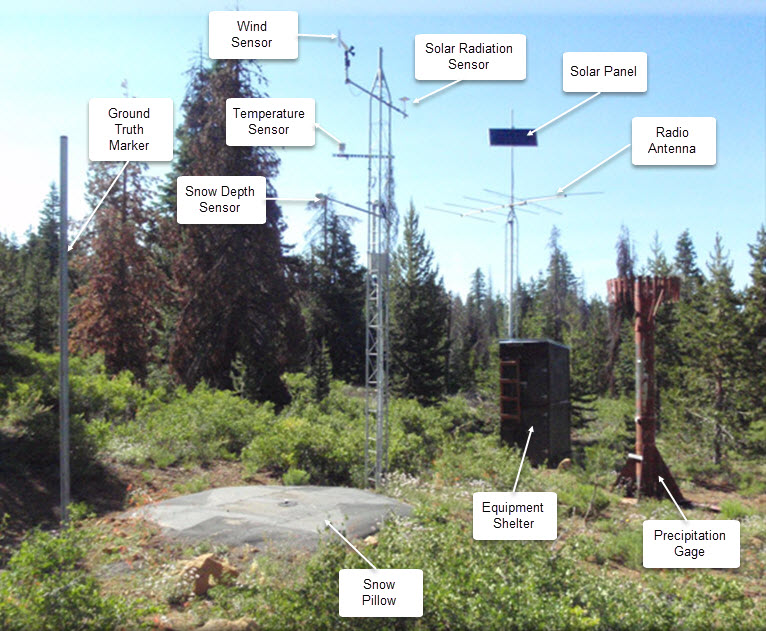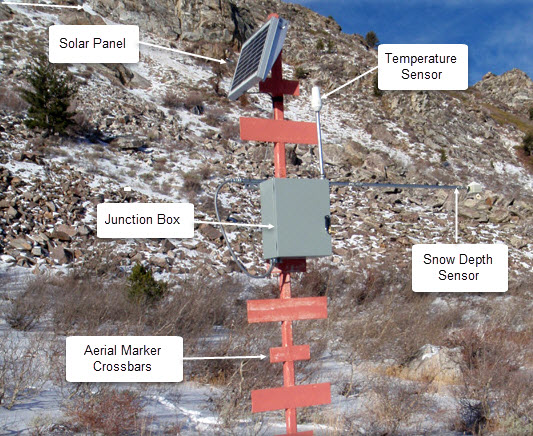Automated Snow Monitoring
As part of the Snow Survey and Water Supply Forecasting (SSWSF) Program the National Water and Climate Center administers an automated snow monitoring program consisting of several types of automated and semi-automated data collection methods.
Snow Telemetry (SNOTEL) Network
The SNOTEL network is composed of over 900 automated data collection sites located in remote, high-elevation mountain watersheds in the western U.S. They are used to monitor snowpack, precipitation, temperature, and other climatic conditions. The data collected at SNOTEL sites are transmitted to a central database, called the Water and Climate Information System, where they are used to make water supply forecasts.
SNOTEL sites are designed to operate unattended and without maintenance for a year or more. A typical SNOTEL remote site consists of measuring devices and sensors, an equipment shelter for the radio telemetry equipment, and an antenna that also supports the solar panels used to keep batteries charged.
A standard sensor configuration includes a snow pillow, a storage precipitation gage, and a temperature sensor. The snow pillow measures how much water is in the snowpack by weighing the snow with a pressure transducer. Automatic measuring devices in the shelter house convert the weight of the snow into an electrical reading of the snow's water equivalent -- that is, the actual amount of water in a given volume of snow.
SNOTEL stations also collect data on snow depth, all-season precipitation accumulation, and air temperature with daily maximums, minimums, and averages. Many enhanced SNOTEL sites are equipped to take soil moisture and soil temperature measurements at various depths, as well as solar radiation, wind speed, and relative humidity. The configuration at each site is tailored to the physical conditions, the climate, and the specific requirements of the data users.
The data collected at SNOTEL sites are generally reported multiple times per day, with some sensors reporting hourly. More on SNOTEL sensors

SNOTEL automated data collection site
What is SNOTEL? Infographic
Snolite Network
Since the early days of the snow survey program, aerial markers have been used to measure snowpack in very remote areas where accessibility is limited.
In the last few years, some aerial markers have been outfitted with basic sensors, such as temperature and snow depth, and telemetered using the Iridium Satellite System. Aerial markers with these sensors are called Snolite sites.

Snolite automated aerial marker
Telemetry and Data Transmission
Data at SNOTEL and Snolite sites are collected and stored by a datalogger installed in the equipment shelter or in a junction box. Depending on the location of the site, data are transmitted back to the Water and Climate Information System using one of several telemetry systems:
Meteor Burst
Cellular
Satellite (GOES, Iridium)


